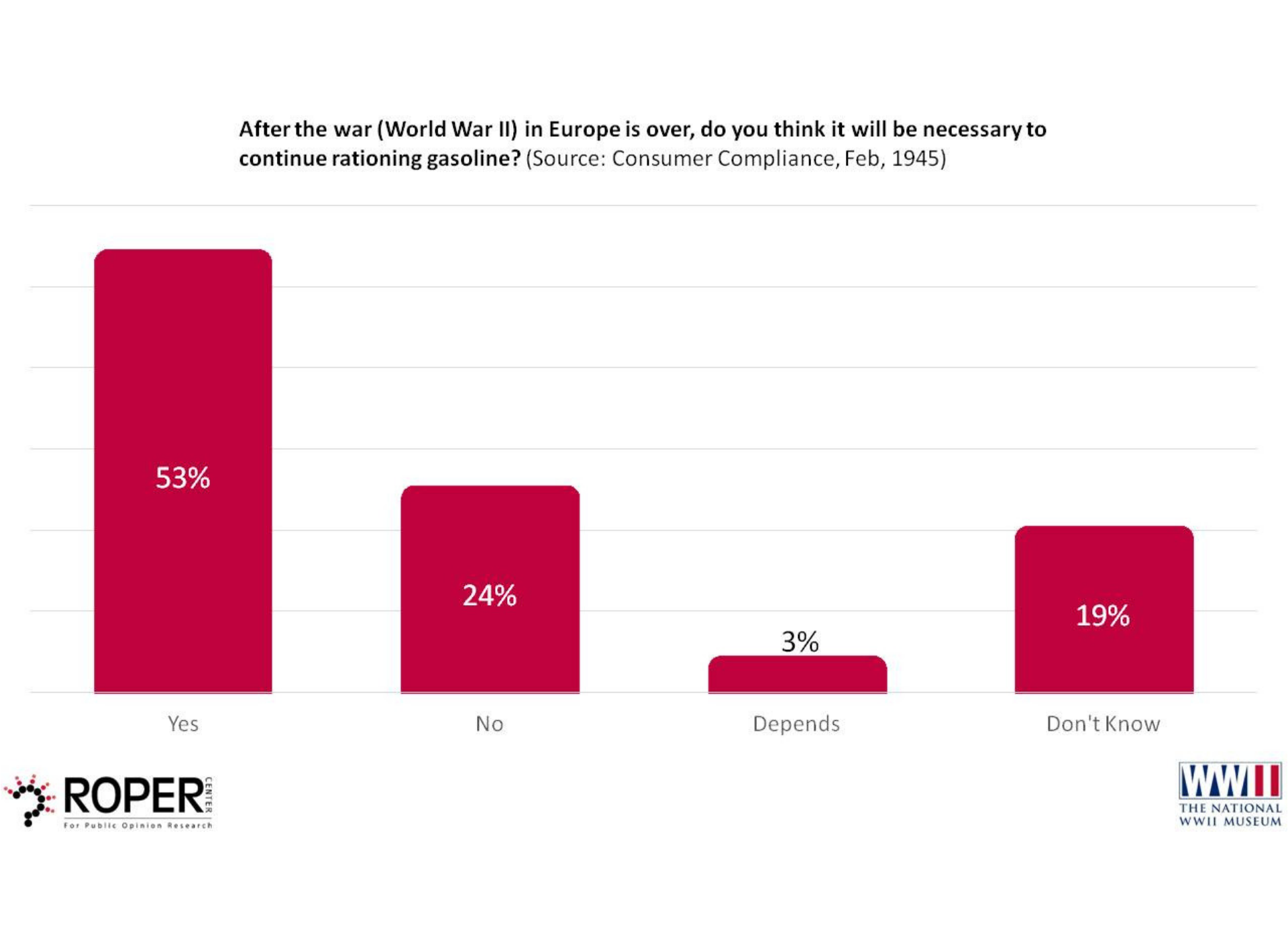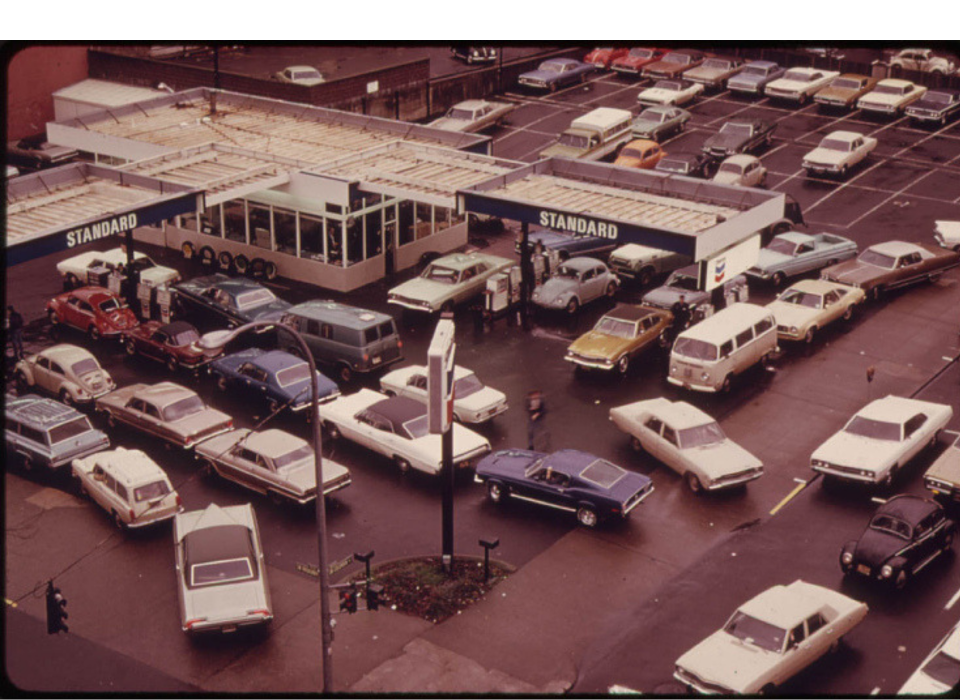Lead Image: First day of gas rationing, California, May 9, 1979. Courtesy of the National Archives.
During World War II you could not walk into a store and buy whatever you wanted. Things, which were plentiful before the war, were now scarce and the government introduced a rationing system to ensure everyone was able to obtain their fair share. Items such as sugar, butter, and milk were taken for granted before the war and now rationed. The U.S. Office of Price Administration (OPA) was responsible for rationing. Consumer goods were no longer a priority due to the economy’s shift to war production. The food rationing program began in the spring of 1942 and for the next three years rationing became a part of everyday life. In addition to food, clothing, shoes and coffee were also rationed. By December of 1942, rubber and gasoline were added to the list of rationed items. The OPA issued stickers, which were placed on your windshield, to determine how much gasoline you were entitled to. The “A” sticker was the most common and entitled you to four gallons a week. The “B” sticker was for business owners which permitted you to eight gallons a week. The “C” sticker was for people with a professional occupation which was indicated on the sticker. There also was an “M” sticker for motorcycles and a”T” sticker for truck drivers. In addition to rationing gasoline, the speed limit was established at 35 MPH for the duration of the war. The rationing of gas was done not only to conserve gasoline but also to conserve tires. With the Japanese occupation of most of the Pacific, our rubber supply was severed. Gas rationing would continue until August 15, 1945.

No gas rationing but welcome to the gas crisis!
The United States has a never-ending need for oil consumption. We account for less than 5% of the world’s population; yet, we consume about 20% of the world’s energy supply. Americans love cars and hate public transportation. We want above all else an endless supply of cheap gas. During the 1970s we became aware of the fact an endless supply of cheap gas would not last forever. In the early 1970s, oil imports more than doubled in the United States. Then in 1973, The Organization of the Petroleum Exporting Countries (OPEC) imposed an embargo of oil on the United States in response to our support of Israel during the Yom Kippur War. The result was shocking: huge lines formed at gas stations, people lined up early in the morning in fear they would run out of gas, and car owners bought locks for their gas tanks so no one would siphon their fuel. The Nixon Administration passed a law establishing 55 MPH as the speed limit on federal highways. OPEC ended its embargo in March of 1974, but the energy crisis was real and was here to stay. In the summer of 1979, another oil crisis hit the United States, when the Iranian Revolution led to a decline in oil production. Long lines returned, drivers accused each other of cutting in front of them in line and fighting broke out on more than one occasion. In an attempt to help relieve the 1979 gas crisis, several states enacted odd-even rationing laws, which based upon your license plate, determined when you could purchase gas. The novelist John Updike wrote in Rabbit Is Rich, “The Great American Ride is ending.” In 1991, Saddam Hussein sent Iraqi troops into the oil-rich country of Kuwait. President George H. Bush saw the action as a threat to the global oil supply and responded by sending American troops in to liberate Kuwait from the Iraqis. Starting in 2003 there was a huge rise in gasoline prices caused by the global demand for petroleum. To this day no Presidential Administration has developed a successful oil policy. In the end, with their gas efficient automobiles, it is the Japanese car manufacturers who have benefited from our reliance on gasoline.

WWII Polls
Public opinion polls give us unique insight into America in the WWII era. Each week, historians from the Institute of War and Democracy work with the archives of the Roper Center for Public Opinion Research to explore what Americans believed and how they felt about events and people related to the WWII years.
Dan Olmsted
Cite this article:
MLA Citation:
APA Citation:
Chicago Style Citation:






![Max Fuchs, New York City cantor, sings as Rabbi Sydney [sic] Lefkowitz, Richmond, VA, conducts the first Jewish services from Germany.](/sites/default/files/styles/max_650x650/public/2025-10/image1.jpg)


